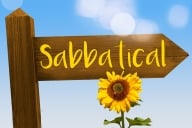You have /5 articles left.
Sign up for a free account or log in.
Navigating the Tour de France has a few things in common with the ride toward promotion and tenure: multiple stages over varied terrain (some mountainous, some medium, some flat) over a long distance (nearly 3500 kilometers) with few rest days (two, in fact).
Teamwork is at the heart of the Tour, with strategies like pacelines and pelatons designed to support the best riders by using the reserves of teammates. Regular feed zones along the way replenish energy reserves. Pace cars and cheering crowds support riders’ highs and lows. Emergency vehicles patch up riders and cycles and get them back on course. Twenty-two days later, most riders arrive at the Champs-Elysees in Paris.
Compared to the Tour, the road to promotion and tenure is longer, lonelier and less supported.
Academia offers few chances to join a paceline to draft on the efforts of others. And, when a pelaton forms, it’s easier to get swallowed up in the crowd of other “riders” than to make your way to the front for the breakaway. Feed zones usually involve whatever is closest to your computer keyboard, and emergency assistance is, well, sparse.
Like finishing the Tour de France, the rewards for completing a successful ride toward promotion and tenure are great. And putting all the academic stages together successfully requires strategic decision-making and thoughtful action.
Cycling in the Pacific Northwest
While neither of us are professional riders, we both enjoy the challenge of cycling at a level that fits our worldview. This level of cycling still requires preparation for a positive outcome. So before embarking on recent cycling trips, each of us spent time analyzing our needs and mapping our routes.
First, we analyzed the pros and cons of touring on our bicycles versus going the traditional route: via car. In contemplating our needs, we recognized that our bike adventures would be more robust and our appreciation of the natural environment would be more meaningful given our ideologies (and the price of gas).
Next, we asked around for insight and advice from other cyclists who make similar treks and considered whether we had the desire, time and stamina for such adventure.
Finally, we harnessed the power of the Internet and Web 2.0 tools, gathered data (weather, distance, restaurants, sights, lodging, etc.), and mapped our route, confident that we would experience the Pacific Northwest in a different, perhaps more dynamic, way than if we were to embark on a traditional road trip.
In our first three essays on digital portfolios ("Old Dog, New Tricks,""Serious Fun" and “Digital Makeover in Your Future?”), we outlined a set of considerations similar to planning a bike trip:
- creating a digital portfolio brings conceptual and construction challenges that differ from the traditional paper review portfolio,
- constructing a digital product can be more meaningful than a traditional paper-based review portfolio, and
- asking others for tips helps to decide whether to create a digital faculty review portfolio or “stay the course” with paper.
In this essay, we discuss how to assess platforms for creating digital portfolios, design an interface appropriate for your reviewers, and implement your plan to deliver rich, dynamic content to support your bid for tenure and promotion.
Packing our bags and changing course
Having ventured on many car road trips, when we planned our recent cycling trips there was a tendency to overpack and include multiple outfits, rain gear, comprehensive toiletries and first aid supplies, reading materials, and impressive arrays of electronics (cameras, iPhones, iPads, and, of course, the appropriate power supplies).
This same tendency to mimic a text-based portfolio may seize you if you’re inclined to scan all of your documents and dump them onto a website, confident that you have created an effective digital portfolio, rather than strategically thinking about what you need in your portfolio, and how to present it effectively given the technical capabilities of the web product you’re using.
Don’t worry: this inclination is normal. As we’ve noted previously, we tend to keep doing what we’re used to doing, even when an environment offers new advantages.
In fact, Hayles (2004) notes that early versions of electronic text imitated traditional text by allowing readers to dog-ear or paper clip electronic pages. Similarly, Kress (2004) discusses how early webpages followed the order of books with one entry point whereby the reader must follow the order defined by the author.
Kress also indicates that emotional barriers keep us from shifting from communication primarily via writing to communication largely via images. Feelings of anger or nostalgia may surface because we are moving away from a most valued account of knowledge: the book. This shift in representation is tied up in social, political, economic and cultural values. One might keep this in mind when considering the audience of one's professional review.
If this is the first time you’re thinking about creating an electronic portfolio, run it by the head of those reviewing you. If you sense that this move may go too much against the grain and compromise your review, then consider sticking with a paper portfolio.
If, however, you’re satisfied that those evaluating you will react positively to this digital review opportunity and you’ve addressed the questions we’ve posed in previous articles (see links above), then begin charting your course.
We suggest three stages for this portion of your tour de digital portfolio: choose a platform, design your interface, and develop your website.
1. Assessment: Choosing a Platform
Deciding on a place to host your digital portfolio depends on your needs and comfort level with technology. If you’re an expert with web development, create a site in code or with software packages like the Adobe Creative Suites. Or, if you’re interested in developing a content management system and are willing to learn concepts, technology, and terminology to create a powerful website, then perhaps Drupal is your best choice.
If, however, you desire an “easy-to-create” site with templates, where you don’t have to worry so much about designing the look and feel, then perhaps some of the following options are for you:
· Google Sites
o Pros:
§ Templates
§ Multitude of widgets
§ Seamless connection with other Google products (docs, Picasa, etc.)
§ Ability to have multiple authors
§ Free
o Cons:
§ The design of the templates may not suit your needs and can be difficult to modify
§ Footer text at the bottom always displays “sign in, report abuse, etc.”
· WordPress
o Pros:
§ Easily customizable templates
§ Easy to set up
§ Mobile friendly
o Cons:
§ Technically this is a blog tool and takes a bit of work to make this appear more like a website.
§ Depending on the template you choose, there could be costs associated.
While we haven’t explored the following website building tools personally, perhaps one of them might fit your needs:
When making this decision about where to host as well as your ensuing decisions about how to display information, ask yourself: Does the medium aptly convey my message? And, will my reviewers be able to access my content on all types of devices and browsers?
Once you’ve selected your platform, it’s time to consider how you’ll set up your website to display your evidence to best effect.
2. Design: Mapping the Terrain for Reviewers
Imagine having a GPS system built into your digital portfolio – one you’ve designed, based on what you know about your local community of readers and reviewers. That’s what you’ll be doing once you start making decisions about what to feature in your portfolio, and how to guide readers through the evidence. You want them to know where they are, easily see where they’re going, and notice particular information along the way.
Rather than designing a point-to-point navigation system similar to what you receive when you use a tool like MapQuest to plan a trip (i.e., a map and a list of turns to make to get from one place to another), your digital platform offers multiple ways to feature and encourage interaction with information.
If you’ve explored some of the links in this essay as you read, you’ve experienced the power of user control.
Since text is an important part of getting your message across, it’s important to display it efficiently. If we think about traditional English text, we are, in essence, required to read it in the order that that author intended: chapters are numbered and build upon each other. Within chapters, order is also fixed, where we start at the top left hand of the page and then move across until the end of the line and then proceed to the next line. Thus, the author determines our entry, progression and exit (Kress, 2004).
Current websites, however, are shifting away from this author control and recognize multiple entry points, multiple reading paths, different cultural lenses of the readers, and the use of image to organize the page: perhaps, even the equal use of image and writing for presentation of material (Kress).
Because users control how they navigate your site, information must be easily accessed regardless of the users’ navigational paths. In fact, “the quality and acceptance of an interactive human-computer system is highly dependent on the ergonomic design of user interface” (Zulch and Stowasser, 2000, p.1). Ultimately, easy navigation is a must.
Foremost in mapping your digital route is your ability to provide clear access to specific evidence required by your department or unit. As in responding to a writing prompt, a reasonable way to do this is to use electronic headings your reviewers will recognize.
In designing your navigation, consider using headings from your tenure and promotion document. Utilizing teaching, service and scholarship as navigational headings is a start, but within these areas, what do you need to include? Teaching evaluations? Syllabuses? Philosophy statements? Service at different levels? Refereed publications? Refereed presentations? A point system based on the menu of options your institution uses to guide your tenure-line activities?
You might also consider using dropdown navigation or using anchors to point to information within a page.
Don’t rush this process, as designing the navigation literally helps you chart the course for the evidence you want to highlight. In fact, consider asking a trusted faculty colleague to try out your initial navigation design once you’ve set it up and loaded a few images, hyperlinks, videos, and documents. Better yet, ask a colleague who has experimented in the digital portfolio world; they’re likely to give you tips on how best to feature your evidence for a best fit with your unit’s plan for tenure and/or promotion.
Implications of an “F”
Why does thoughtful navigation matter? Because readers read websites differently than print text, which may impact your review. Jakob Nielson(2006) found that users read websites in an “F”-shaped pattern.
This finding implies that users won’t read all of your text thoroughly, that the first paragraphs should contain the most important information, and that subheadings must contain critical information as users scan the stem of the “F.”
So take seriously the opportunity to lay out your information thoughtfully with readability in mind and (this one time) aim for the “F.”
3. Implementation: Presenting Rich, Dynamic Content
Once you’ve decided to go digital by choosing a platform and designing your interface, it’s time to develop intentional connections between the information you want to display and the capacities of the web tool you’ve selected for your portfolio.
Without a doubt, you will be using text to make explicit connections between your materials and the standards required. In this instance, you might be thinking of a definition of text similar to that defined by the Oxford English Dictionary as “the wording of anything written or printed.”
If you’re inclined to revert to “old tricks” and focus only on the order of words and punctuation of the written word and not consider the affordances of electronic text, this “would be as inadequate as insisting that painting consists only of shapes and ruling out of bounds color, texture, composition, perspective, etc.” (Hayles, 2003, p. 267). In other words, don’t forget to attend to qualities such as color, font size, shape, page placement, and interactivity when thinking about electronic text.
Given that you’ve intentionally chosen to create a digital portfolio, remember to present information in ways beyond text, perhaps creating a visual story. And, since Nielson found that users often don’t read text thoroughly, consider these ideas for rich content presentation.
Infographics
Granted, academics are the audience of your portfolio, who presumably like to read. However, given the demands of academia, especially in the recent years of budget cuts where people are doing more with less, an infographic may be the most apt representation for elements of your portfolio. An infographic can be used to display various types of visual information:
- A timeline of scholarly work
- A graph of course evaluations
- A flow chart of your service
- A word cloud of student comments
- An illustration of professional growth
Free tools for creating infographics can be found here.
Movies
If an infographic doesn’t fit your work, perhaps a movie more suitably demonstrates your excellence. For instance, describing a teaching scenario in text only goes so far, but with easy access to recording and editing devices, consider capturing and annotating your teaching in a video. With a little creativity, Camtasia, Jing, iMovie, and MovieMaker all offer potential methods for annotating video.
Podcasts
While we often read faster than we listen, might a radio show or recording deliver your message effectively? Have you composed a series of podcasts for your classes that you want to showcase? GarageBand and Audacity make creating podcasts simple.
Other
Given that creating a professional portfolio can be stressful and highly academic, don’t forget to have some fun and celebrate your accomplishments. If you’re feeling a little zany in this process and your reviewers are open to a bit of humor, you might even create a talking avatar using a tool like Voki. (Comments expected on this one – bring ‘em on.)
Remember: since content may be represented in a multitude of ways, always consider a few questions: First, is the medium the most appropriate way to demonstrate my information? Second, will my reviewers be able to access the content on all types of platforms?
While we have proposed a sequence of steps in this essay, just as a user may bounce around in your website and take a nonlinear path, creating your website may not be as sequential as we have proposed and could require you to revisit your navigation or modify your interface once you start adding rich content.
Conclusion
So there you have it: our suggestions for assessing potential digital platforms, designing an effective interface for reviewers, and implementing your plan for presenting compelling evidence of your teaching, service, and scholarship using a dynamic, robust environment.
Does this sound too untraditional and nonacademic?
Remember that the emotional, social, and political blocks we have about representing academic material are normal. But take heed: if your reviewers tend to have these mental blocks, then this may not be the time to move to a professional digital portfolio.
On the other hand, considering that our students have been creating electronic portfolios for years, and that many faculty are experimenting with teaching portfolios, perhaps it’s time to join the riders near the front of the pack and become an innovator.
If you and your reviewers are seriously considering new literacies, then chart your course, and show and tell your story digitally.
Break out of the pack and strive for the yellow jersey.








